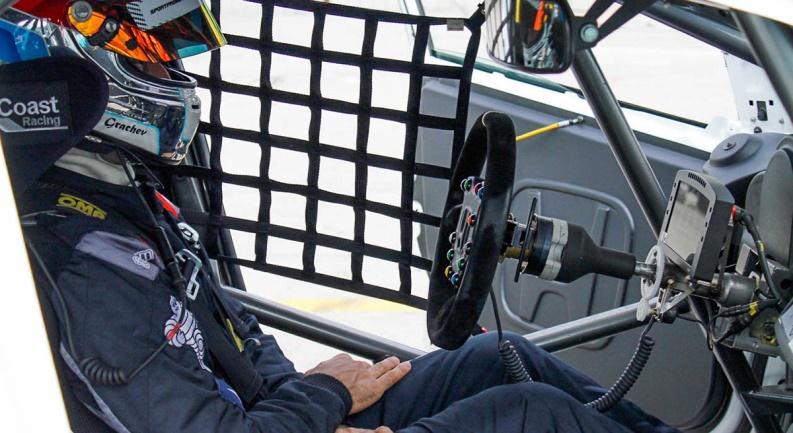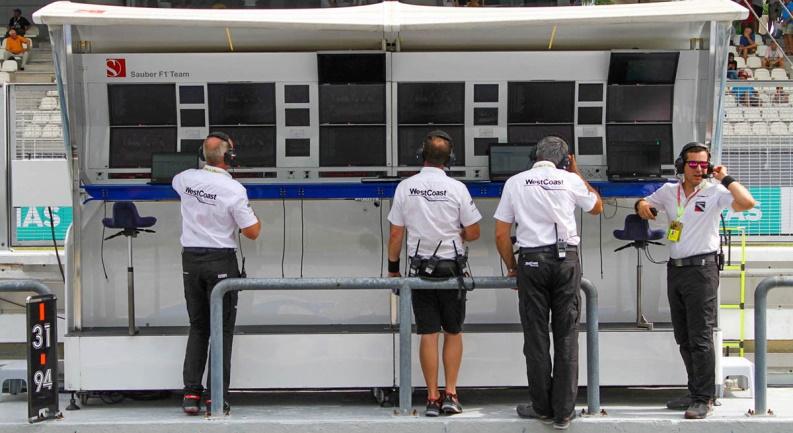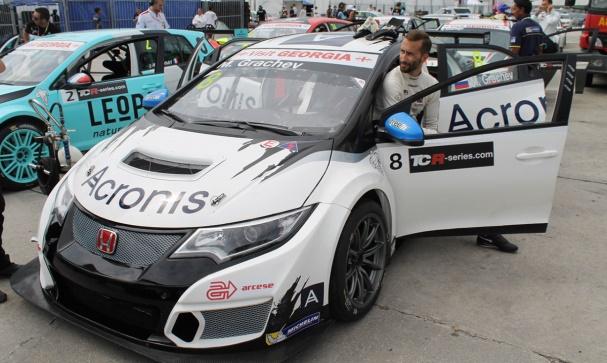Mikhail Grachev: "Information is power in car racing"

If you're into car racing, you've probably heard of the TCR International Series. And if you know about the TCR International Series, you’ve probably heard about the Swedish team WestCoast Racing. And if you know about WestCoast Racing, then you know the name of the rider Mikhail Grachev. And if you heard about Mikhail Grachev, then you understand that this is one of the best riders of the series - this season he has already won four victories.
Sponsor Mikhail Grachev in the Malaysian TCR International Series round, held simultaneously with the Malaysian Formula 1 Grand Prix on the Sepang track, was Acronis. Here is what the racer himself said about the role of data in motor sports and the importance of using the fastest solution to protect this data.
Michael, could you tell us about the role of information technology in the TCR?
')
Success in the TCR International Series, as in other modern racing competitions, depends largely on the data collected on the track. Information is power in auto racing. There are about 20 people in our team - they are racers, mechanics and engineers who calculate our next steps based on the information collected during the race.
Most of this data comes from telemetry sensors installed in our vehicles. In my Honda Civic Type-R TCR over 50 of these sensors. Each sensor starts automatically as soon as I start my car. After the end of the race, our engineers transfer data from the vehicle to the computer for processing and analysis. It seems that 50 sensors are few, but they generate a huge amount of data!

All systems are operational. Five minutes to race.
Is telemetry also transmitted to your engineers during the race?
No, this is not an online transmission. Data is only recorded on drives inside the car, and is unloaded for processing already in the garage.
What software do you use?
We use software from MoTeC Engine Management & Data Acquisition Systems (engine management and data acquisition systems). Some of them work in the car, others - on the computer. These are excellent telemetry analysis tools. They have many channels for collecting and processing various types of data, depending on their needs.
What telemetry data are you personally interested in as a racer?
All telemetry data is important. For example, telemetry helps me to understand how to go through the turns of the track as efficiently as possible: what mechanism to use, when to brake, how long to brake, and so on. Before each race, we discuss this with our engineers. They show me a point on the map where you need to brake, then give instructions like “brake 10 meters later than last time” or “do not press the brake too abruptly, do not lose too much speed” or “move the brake balance forward a little” (while the front wheels brake before the rear), and the like.
Why is it important? This is important because such knowledge helps you to merge with the car together, makes it possible to synchronize with it, develops an additional sense of how your actions affect the behavior of the car. This is what leads you to success.
Thus, we, together with the engineers, analyze, clarify and discuss telemetry data. After that we bring the cars to the track with a full understanding of what is needed from us.

Ready to race. TCR International Series on the Sepang highway in Malaysia.
How about a brand new race track that you have never gone through before?
Fortunately, we have modern technologies and computer modeling. They allow you to download the map of the track, weather conditions, car parameters and run some virtual calculations. Of course, this is not at all what to go through the actual route, but sometimes this is all that is possible to do. Our simulators are not as perfect as the Formula 1 racers, but our series is still developing, and we are moving forward.
We use simulators for preliminary study of a track, its turns, straight lines, braking points and a set of maximum speed. After the first race on a real race track, we start working with real data.

The race begins. Engineers at WestCoast Racing are busy.
If the TCR International Series supports Formula 1 racing, do you use any standard FIA services on the racetrack?
We use pit lane and track tracking monitors, as well as standard services such as timing and video channels. As for GPS, our cars have their own sensors, which register GPS data and help build a timetable.
What is the type of IT infrastructure in your garage?
Our IT infrastructure is very simple. We do not have any servers - only a few laptops, plus data storage devices on each machine, which stores all the telemetry data for the history of races.
After returning the car to the garage, we merge the data into laptops, analyze them, and then save the results.
One of our biggest problems is data management and protection. Our data storage devices are sometimes extremely difficult to use. First of all, they are subject to physical damage and hardware failures, as they are transported in cargo containers with the rest of the team’s equipment. As data accumulates, they begin to work more slowly, which makes it difficult to find the necessary information. This is very dangerous because it is critical for us to recover data as quickly as possible, especially on the days between races. We always wanted to have some kind of cloud storage where our data could be at the same time and as accessible as possible and protected.

Mikhail Grachev and his Honda Civic Type-R TCR.
PS Heroes of Formula 1 at MIPT!
On November 17, there will be a meeting with Formula 1 driver Daniil Kvyat, one of the youngest riders of the Scuderia Toro Rosso team, and team leader Franz Tost. MIPT graduates Sergey Belousov (CEO of Acronis) and Stanislav Protasov (co-founder and head of software development at Acronis) decided to make such a gift for the 70th anniversary of their alma mater and all physicists.
During the unique public talk, Sergey and Daniel will talk about the role of modern information technologies in the world of Formula 1, the technologies that came into our life from motor sports and the future of the automotive industry and IT. And also about the role that the blockchain can play in all this in the near future.
Guests will have the opportunity to feel like a Formula 1 pilot. In the hall of the KZ there will be installed simulators of combat cars Scuderia Toro Rosso, where everyone will be able to experience incredible emotions from speeds on the tracks around the world, be it Singapore, Malaysia, Tokyo or Sochi.
Professional photographers will help keep bright frames, and the most successful photos can be printed on magnets. For those who get hungry or come to a meeting right from the training, a pleasant coffee-zone Theory Cuisine and Bar will be organized: tea, coffee and delicious muffins according to plan.
Come, try your hand and find out that modern racing and IT are closer than you think!
»The meeting will take place on November 17, 2016 at the KP MIPT.Original article
»The event starts at 18:00 (agreed, set a little earlier for people to gather).
»Admission is free, prior registration is required .
"But do not forget that the number of seats by invitation in the hall is limited.
Source: https://habr.com/ru/post/314276/
All Articles